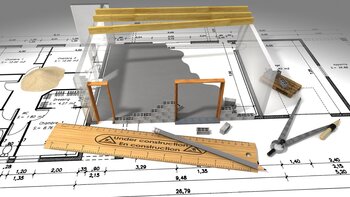
BIMExpo is a project that aims to create a prototype (ProofOfConcept) to facilitate the work of Thomas & Piron (TP) technical sales representatives. Thanks to various technologies, the prototype allows to display judiciously the adequate materials by taking into account the various business constraints and recommendations. Finally, 3D rendering technologies will allow to correctly visualize a choice of materials.
Domaine
Factsheet
Project team
The prototype created in the framework of BIMExpo defines a user-oriented platform combining several technologies:
In this context, Cetic intervened in the business rules management system and in the recommendation system. These tools aim at influencing a decision making.
The rules define a system allowing to reduce a set of results. There are two types of rules: stated rules (related to a customer’s desire, for example, the choice of a red tile) and implied rules (related to the characteristics of the material, for example, the choice of a non-slip tile for a bathroom floor).
The business rules are linked to the implicit rules. The objective is to have high-level structured declarations, which allow to constrain, control and influence the choice of a material. For example in the context of tiles:
Business rules are interesting because they allow to model the whole knowledge of the company. These business rules can be easily edited and their management does not require specific knowledge. Moreover, they can be combined.
The recommendations are based on a BigData analysis of T&P data. They allow you to find items from the same collection, to make an analysis of the most sold items, the least sold items,... The recommendations are used from an article or material already chosen. They allow to harmonize the choice of an article/material according to an article already chosen. For example in the context of tiles:
A first POC has been done based on the use case "tiles". It is therefore a uniconcept POC only oriented on tile type materials. This POC allows to propose a series of recommendations thanks to the analysis of T&P data. A rule management system (BRMS) has also been configured. This BRMS allows to define and execute rules. Finally, a controller has been defined to orchestrate the recommendation engine and the rules engine around an API.
The rules engine coupled with the recommendation engine allows a user to compare/find item alternatives more easily. This allows the end user to more quickly grasp a domain that they do not fully master. This approach also allows to gather in one place the knowledge of the business (business rules).